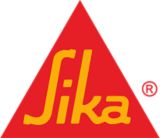SURFACE PREPARATION
1. Pump, place, or otherwise convey the base concrete at a slump not in excess of 5" for a slab on grade. (Please contact your local Sika representative for special information on suspended slab application.) After the concrete has been placed, immediately screed, then bullfloat or highway straightedge the surface.
2. Do not apply the dry shake into the bleed water. If excessive bleed water is present, remove standing water by dragging a hose across the surface, using a squeegee or other approved method.
3. Early moisture loss and rapid setting around the perimeter of the slab are typical; monitor the slab closely for proper timing of the floating.
APPLICATION
1. Apply and integrate one-half to two-thirds of the total amount on the first application and the remaining portion(s) on the subsequent application(s). Do not apply more than 1.0 lb/ft2 in one pass. An automatic spreader is the most efficient, economical, and precise method of applying a dry shake.
2. Allow the first application to absorb moisture, then reprofile the surface of the slab using an 8 – 10 ft wooden bullfloat or wood-laminate modified highway straightedge perpendicular to the direction on the screeding. A wooden bullfloat is preferable because it tends to open the slab rather than close it off. Closing off the slab can possibly trap water under the dry shake layer. To maintain flatness, avoid shaking the bullfloat handle.
3. Near initial set when the slab can support the weight of a person leaving a 1/8 – 1/4" depression, float the surface with a floating machine equipped with clip-on float blades. Hand float the edges with wood floats or darbies. reprofile in both directions using the modified highway straightedge to achieve desired flatness.
4. Without delay, evenly apply the remaining portion of the product. Float the surface again with clip-on float shoes. reprofile, if needed. If desired, pan float, followed by finish troweling.
Note: Do not use pan floats to incorporate the dry shake into the base concrete. They may be used only for final floating to achieve flatter floors. Hand float edges with wood or laminated canvas-resin floats or darbies. Do not use magnesium floats, as this can lead to discoloration.
TROWELING
1. When the concrete allows, conduct 2 – 3 mechanical trowelings. Leave the prepared slab untouched until the surface has lost its sheen and can support the weight of a finisher and a finishing machine. At this point conduct the first troweling of the surface.
2. On the first application keep trowel blades as flat as possible without digging into the surface.
3. As the surface tightens further, the trowel blades may be gradually raised to produce the desired surface. remove all marks and pinholes in the final slightly raised trowel application. Do not burnish colored dry-shake floors.
Note: All moisture used to incorporate dry shake material must come from within the slab. UNDER NO CIRCUMSTANCES SHOULD WATER BE APPLIED TO AID IN THE INCORPORATION OF THE DRY SHAKE.
Under severe or rapid drying conditions (hot and/or windy), Sikadur-30 ER evaporation reducer or other approved materials may be
mist sprayed onto the dry shake to prevent rapid-moisture loss. MISUSE OF THESE MATERIALS CAN COMPROMISE COLOR AND PERFORMANCE OF THE DRY SHAKE.
CURING
1. At the completion of final troweling and when the surface will not be marred, apply an approved membrane curing compound such as Sikagard® 1315 KNS.
2. After drying, protect hardened surface by covering it with a scuff-proof, non-staining builder paper.
3. Keep floors covered and free of traffic and loads for a minimum of 10 days after completion.
4. Maintain ambient temperature at 50°F or above during the curing period.
5. Do not moist cure or cure with polyethylene.
6. For VOC-compliance on Light-reflective floors, contact your local Sika representative for curing recommendations.
JOINTS
OPTION 1: SEMI-RIGID JOINT FILLER
After a minimum of 90 days,* apply a semi-rigid epoxy or polyurea joint filler, such as Sikagard® CR 190 in all non-dynamic control and saw-cut construction joints. Place the joint filler in compliance with manufacturer’s instructions.
* Please refer to ACI 302r-96, Chapter 9.10.
Delay the installation of the joint filler as long as possible to allow the slab(s) to adequately cure. Proper curing will reduce the amount of separation between the slab and the joint filler.
OPTION 2: IRON-ARMORED JOINTS
1. Remove the concrete at the joints while it is still fresh. Remove it to a depth of 1/2" at the joint line and taper it back to the surface level over a width of 4".
2. Mix the Sikafloor® MetalTop-200 dry shake surface hardener with enough water to produce a stiff mortar. Hand float the area where the concrete has been removed, working up sufficient paste at the surface to ensure an integral bond.
3. Immediately place the Sikafloor® MetalTop-200 mortar into the prepared joint, then rescreed the area to level. Use approximately 4.5 lbs per lineal
foot, which is 2.25 lbs per foot for each side of the joint.

